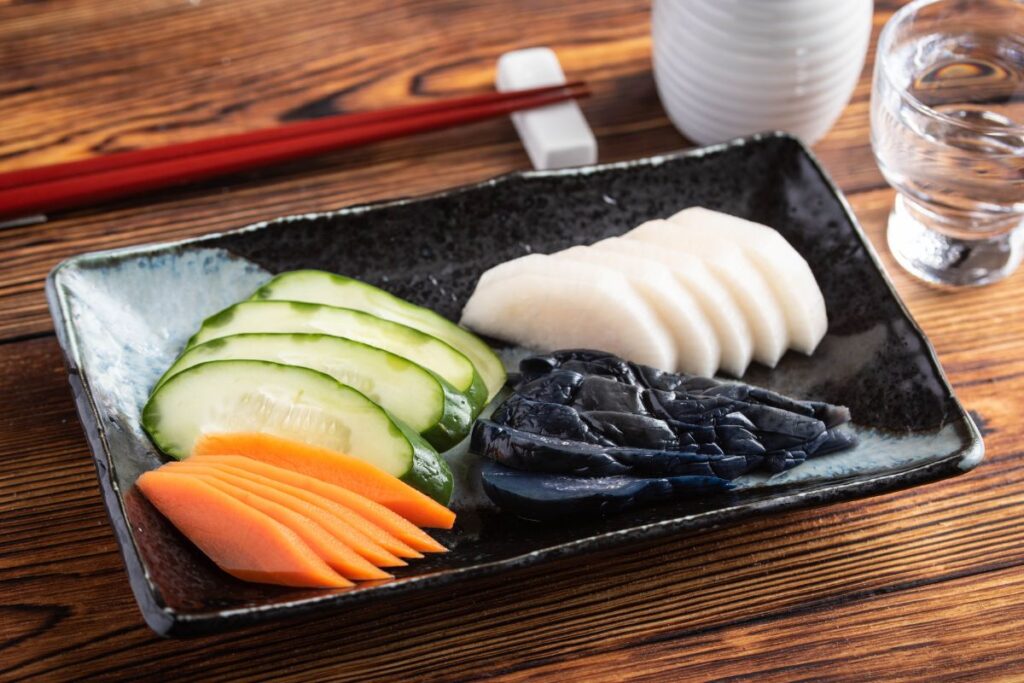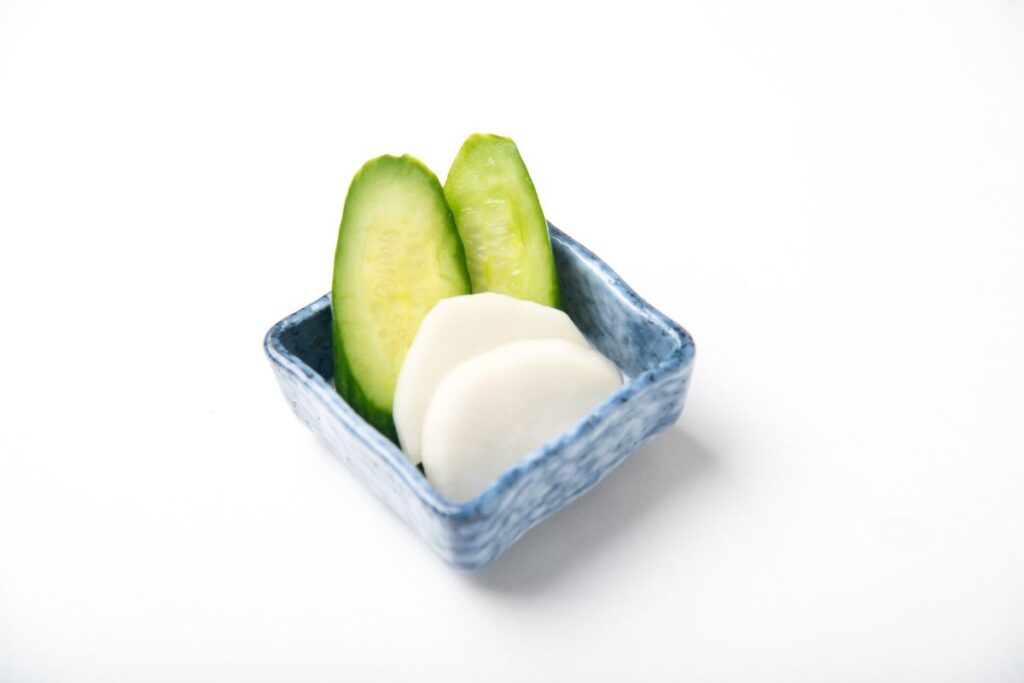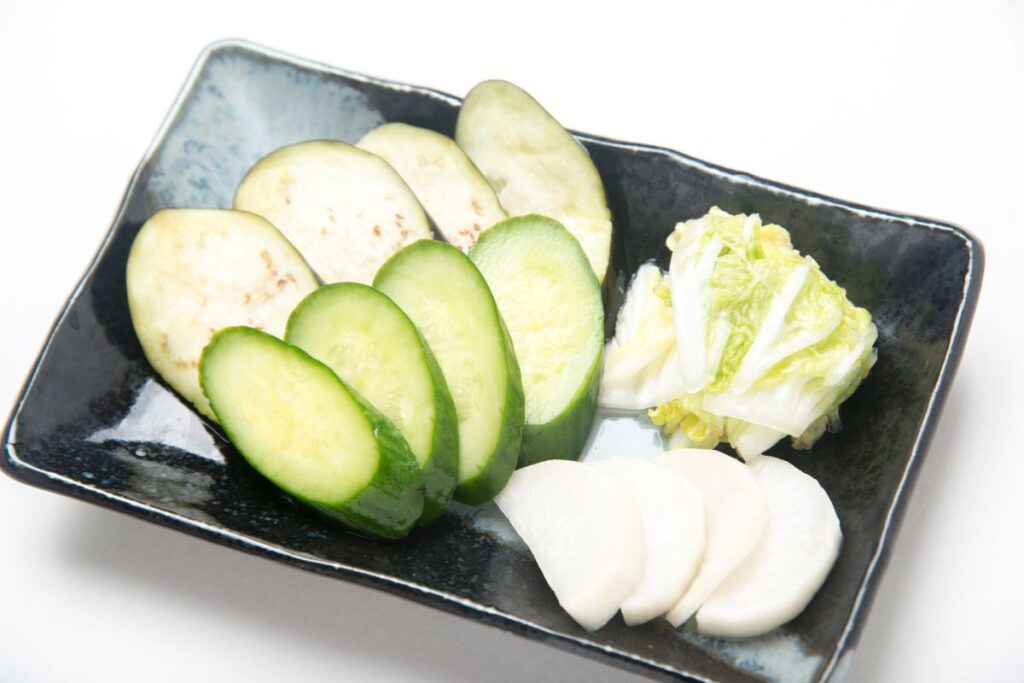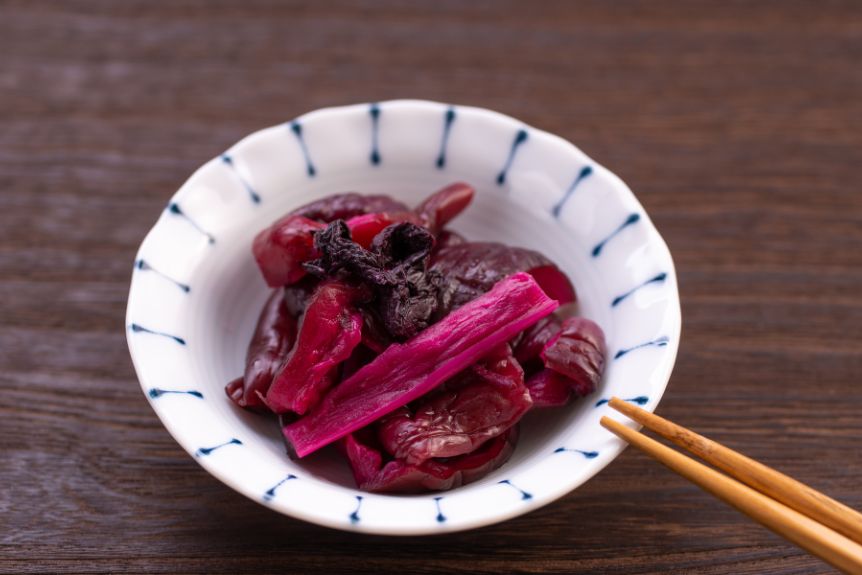Get set to dive into the amazing world of Japanese pickles, where every munch is a burst of flavor and crunch.
Starting from that initial satisfying crunch to the mix of delicious flavors that hit your taste buds, Japanese pickles, also known as Tsukemono, are more than just a side dish. They’re a vital part of Japan’s food scene, with each type having its own tale to tell.
In this article, we’ll delve into the ancient origins of Tsukemono, explore the key varieties that have delighted taste buds for centuries, and uncover regional specialties that offer a glimpse into the diverse tapestry of Japanese gastronomy.
Whether you’re a curious foodie or a seasoned chef, get ready to discover the secrets behind crafting these delectable pickles and learn the perfect pairings that will elevate your meals to new heights.
So, let’s dive into this flavorful journey together, where each crunch unravels a delicious chapter of Japanese culinary tradition.
The Origins of Tsukemono
Japanese pickles or tsukemono’s roots can be traced back over a thousand years in Japanese history, becoming an integral part of the country’s culinary tradition.
You’re stepping into a realm where every crunch and tangy bite connects you to an age-old practice, refined over centuries to suit the sophisticated palette. This isn’t just about preserving food; it’s about mastering a craft that’s as much about patience as it’s about flavor.
To truly appreciate tsukemono, you’ve got to understand its origin. It began as a necessity, a method to preserve food for the leaner months. But you know better than to settle for mere necessity.
The Japanese turned preservation into an art, experimenting with various techniques and ingredients. You’re not just preserving vegetables; you’re encapsulating seasons and the essence of umami in each bite.


Key Varieties of Japanese Pickles to Know
Exploring the world of tsukemono introduces you to a variety of key types, each offering a unique taste and texture. Among these, you’ll find umeboshi, salt-pickled plums with a sour, tangy flavor that’s perfect for cleansing your palate.
They’re not just for enjoyment; they’re a staple in bento boxes for their health benefits and ability to preserve other foods.
Next, dive into the crunchy world of kyuri asazuke, lightly pickled cucumbers. They’re a refreshing side dish, embodying the essence of Japanese simplicity and flavor. Making them at home lets you control the level of crispness and seasoning, tailoring them to your taste.
Don’t overlook daikon radish, transformed through tsukemono into takuan. These yellow pickles offer a balance of sweet and tart, with a distinctive crunch. They’re an excellent introduction to the broader spectrum of tsukemono flavors and textures.
Regional Specialties Explored
As you delve deeper into Japan’s culinary landscape, you’ll discover that each region boasts its own unique Japanese pickles, reflecting local tastes and traditions.
This distinctive variety gives you the power to tailor your palate and explore flavors that resonate with your preferences.
In the North, Hokkaido’s cooler climate lends itself to the production of crisp, hearty vegetables, perfect for making suzuke, cucumbers pickled in a sweet vinegar mix. You’ll find the crunch and refreshing taste ideal for balancing heavier meals.
Venture to Kyoto, and you’ll encounter shibazuke, a mix of cucumbers and eggplants fermented in plum vinegar. Its vibrant purple hue and tangy flavor profile can elevate your dining experience, giving you the chance to savor the subtleties of traditional Kyoto cuisine.
Down South in Kyushu, the warmer temperatures favor the production of takuan, daikon radish dried and pickled in a blend of rice bran and salt.
This regional specialty, known for its crunchy texture and golden color, adds a bright, tangy contrast to rich dishes, allowing you to cleanse your palate effectively between bites.
Embracing these regional tsukemono specialties empowers you to diversify your culinary adventures, ensuring every meal is an exploration of Japan’s rich and varied pickle tradition.


Crafting Your Own Tsukemono
Having journeyed through the diverse regional specialties of tsukemono, it’s now your turn to try crafting these flavorful pickles at home.
The beauty of making tsukemono lies in the simplicity and control you wield over the ingredients and flavors. You’re not just following recipes; you’re creating personal taste experiences.
Start with something straightforward, like quick-pickled cucumbers. You’ll need cucumbers, salt, and your choice of seasonings—perhaps a dash of sesame oil or a sprinkle of chili flakes for a kick.
The process is simple: slice the cucumbers, mix with salt and seasonings, then let them sit. In just a few hours, you’ve created a crunchy, refreshing side dish.
But don’t stop there. Experiment with different vegetables. Radishes, carrots, and even eggplant can be transformed into delicious tsukemono. Each vegetable offers a unique canvas for your culinary creativity.
Pairing Japanese Pickles With Meals
Once you’ve mastered making your own tsukemono, pairing them with meals elevates your dining experience to new heights.
You’ve got the power to transform any ordinary meal into an extraordinary one with just the right tsukemono. Think about the balance of flavors and textures when you choose your pairings.
Rice dishes, for instance, benefit immensely from the crisp, tangy bite of quick-pickled cucumbers or ginger. They cut through the richness and add a refreshing contrast.
If you’re indulging in something fatty like grilled meats, reach for something like daikon radish tsukemono. Its sharpness and crunch will cleanse your palate, making each bite as enjoyable as the first.
Don’t forget about noodle dishes. A side of lightly pickled vegetables can introduce an unexpected pop of flavor that complements both cold soba and hot ramen.
And here’s where you truly take control: experiment. The beauty of tsukemono is its versatility. Start with traditional pairings, then mix things up.
Your unique creations might just become the next classic combination. After all, it’s your meal; you call the shots. Elevate your dining, one pickle at a time.
Conclusion
Now that you’ve journeyed through the vibrant world of tsukemono, from its ancient roots to the diverse regional specialties and even learned how to craft your own, you’re well-equipped to bring this crunch and flavor into your meals.
Whether you’re looking to enhance a traditional Japanese dish or add a unique twist to your favorite recipes, tsukemono offers endless possibilities.
However, some people may argue that the strong flavors of tsukemono can overpower the delicate flavors of certain dishes. What’re your thoughts on this? Leave a comment and let’s know your perspective!
So go ahead, experiment with these pickles, and discover how they can transform your culinary creations.





Konnichiwa! (Hello!) I'm Pat Tokuyama, a Japanese tofu cookbook author, who travels for music, food, and adventure. If you like Japanese tea, checkout some of the newestorganic japanese tea, matcha bowls and noren and more!
** Curious about the Plant Based Japanese Cooking Club? ** Learn more here!